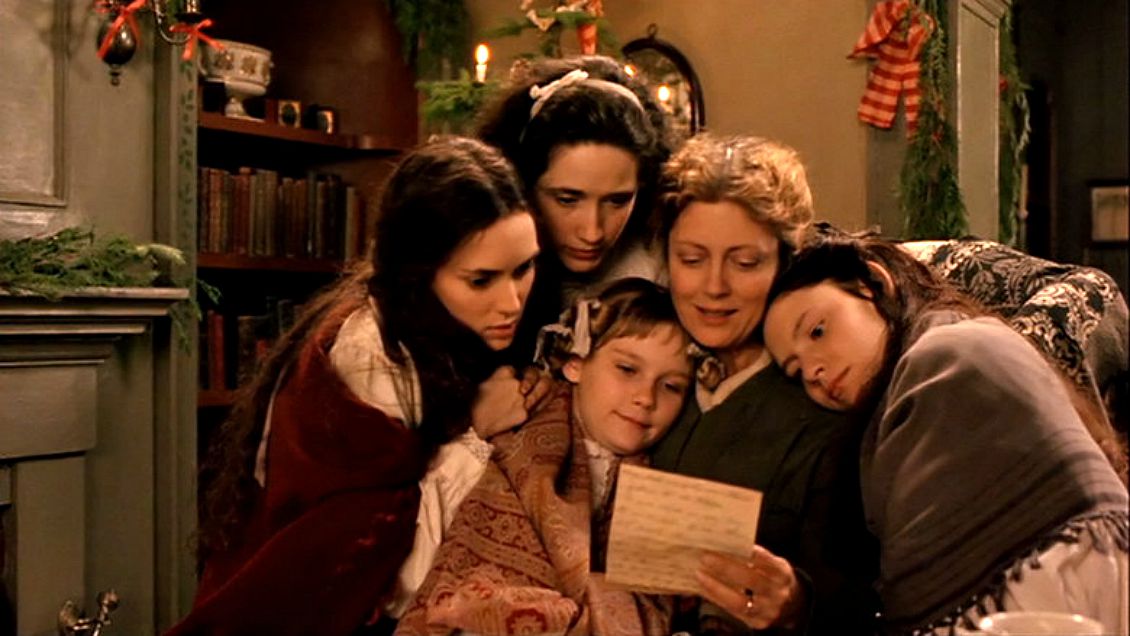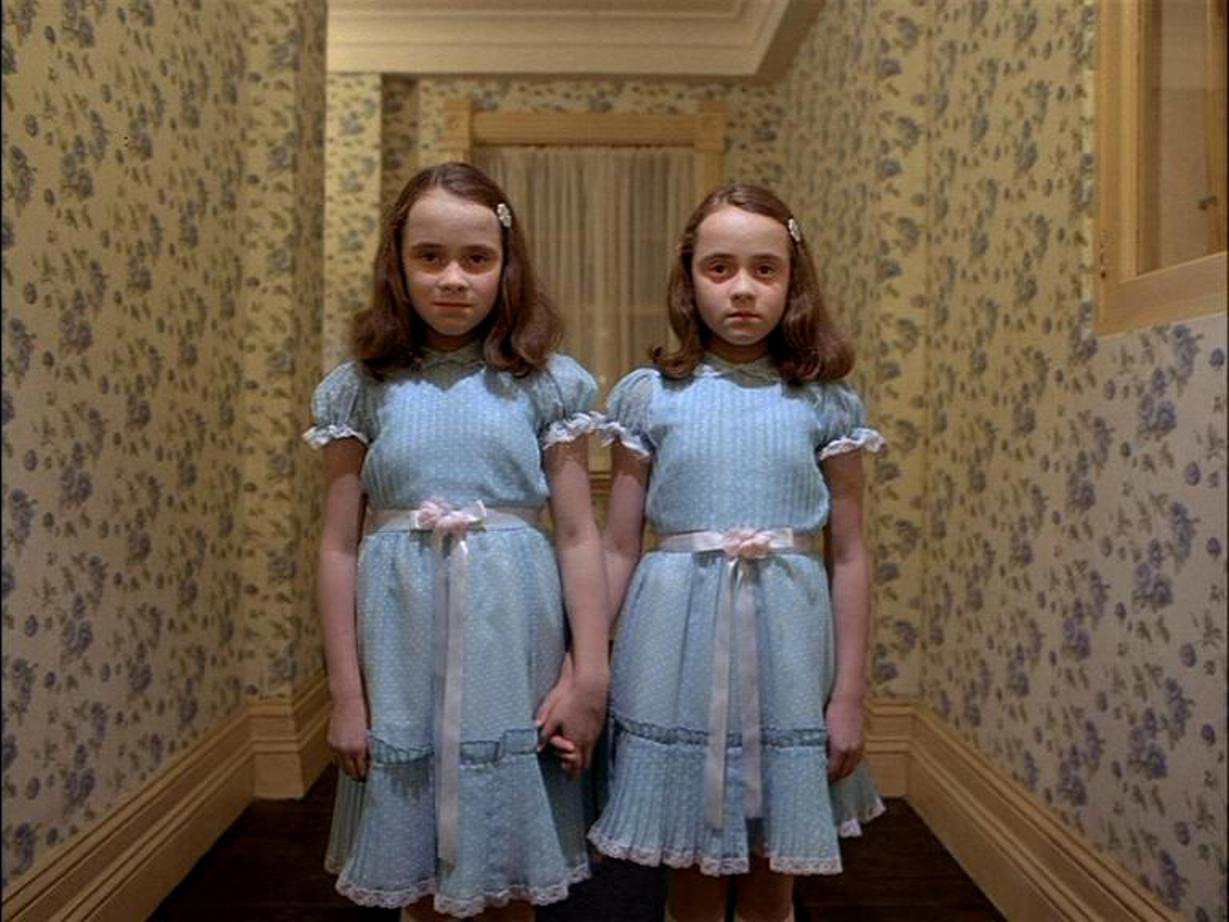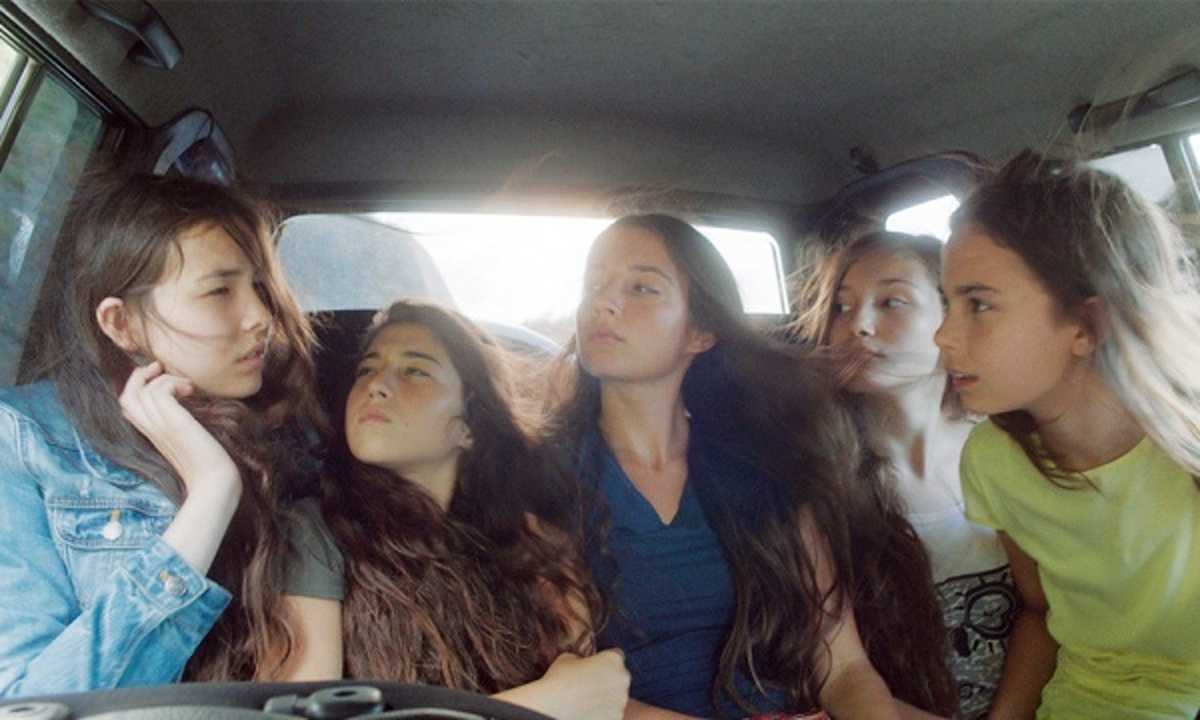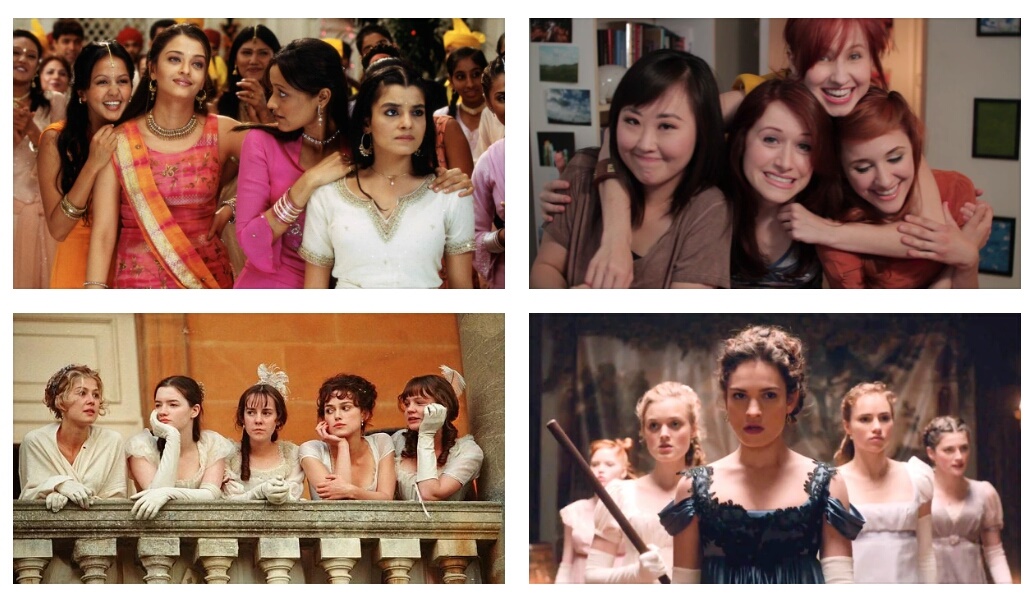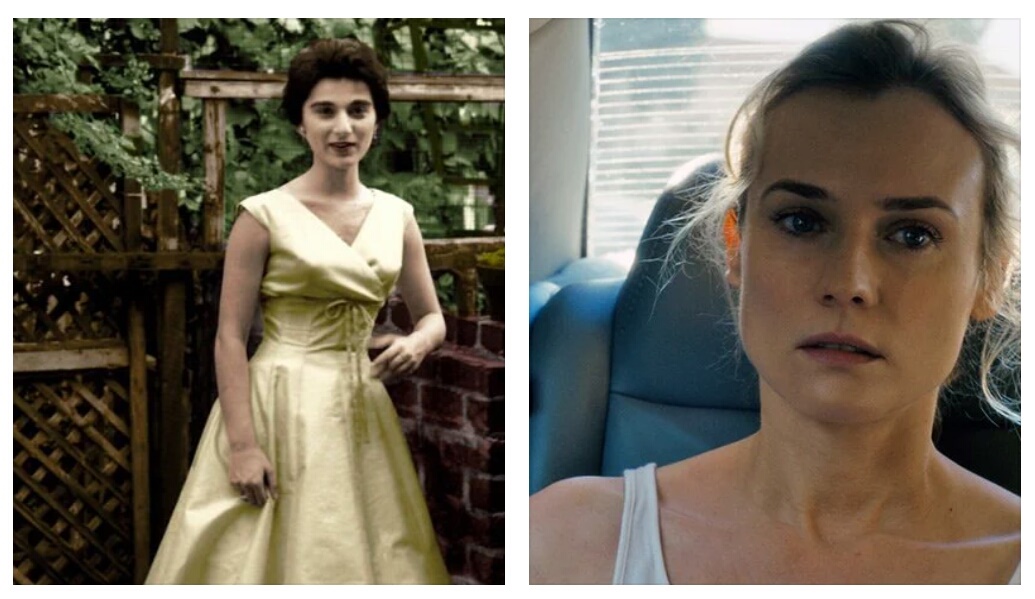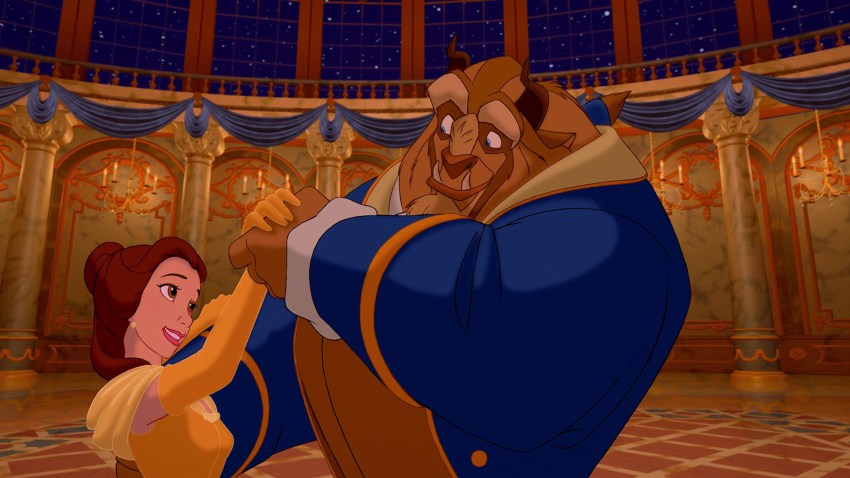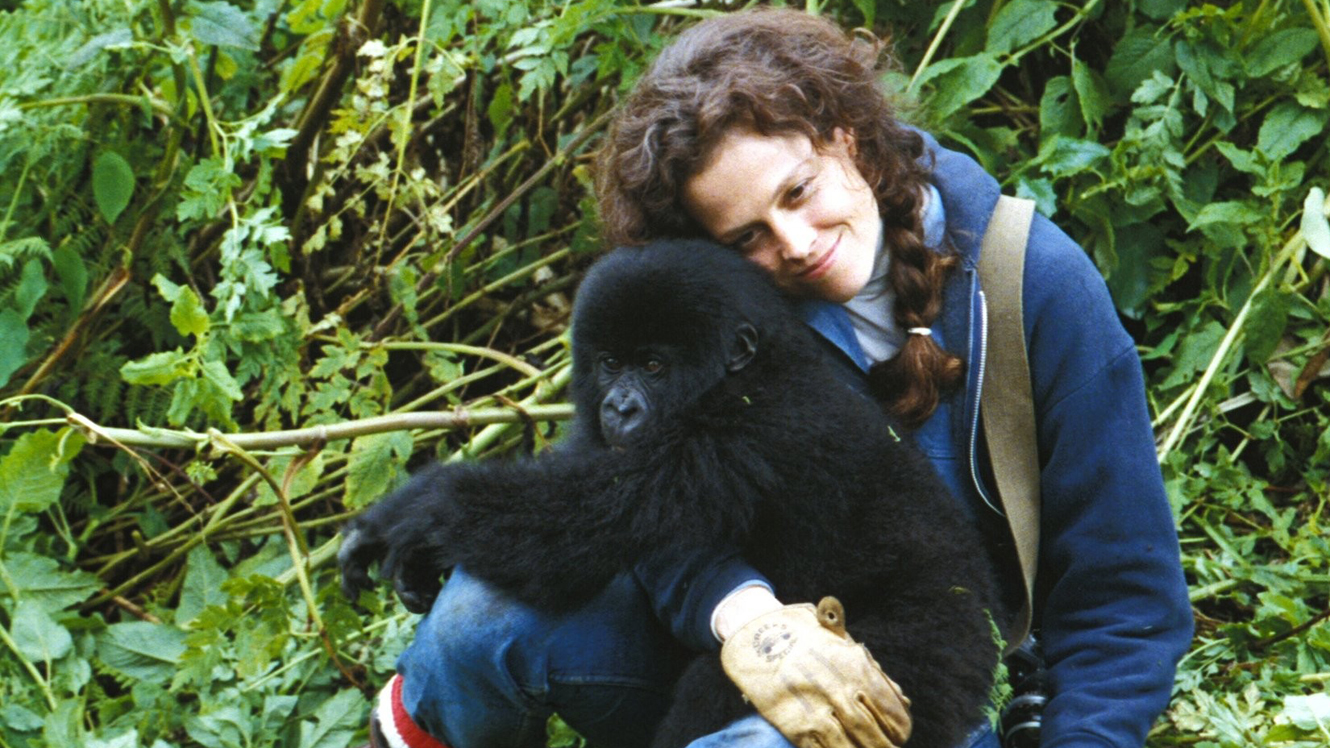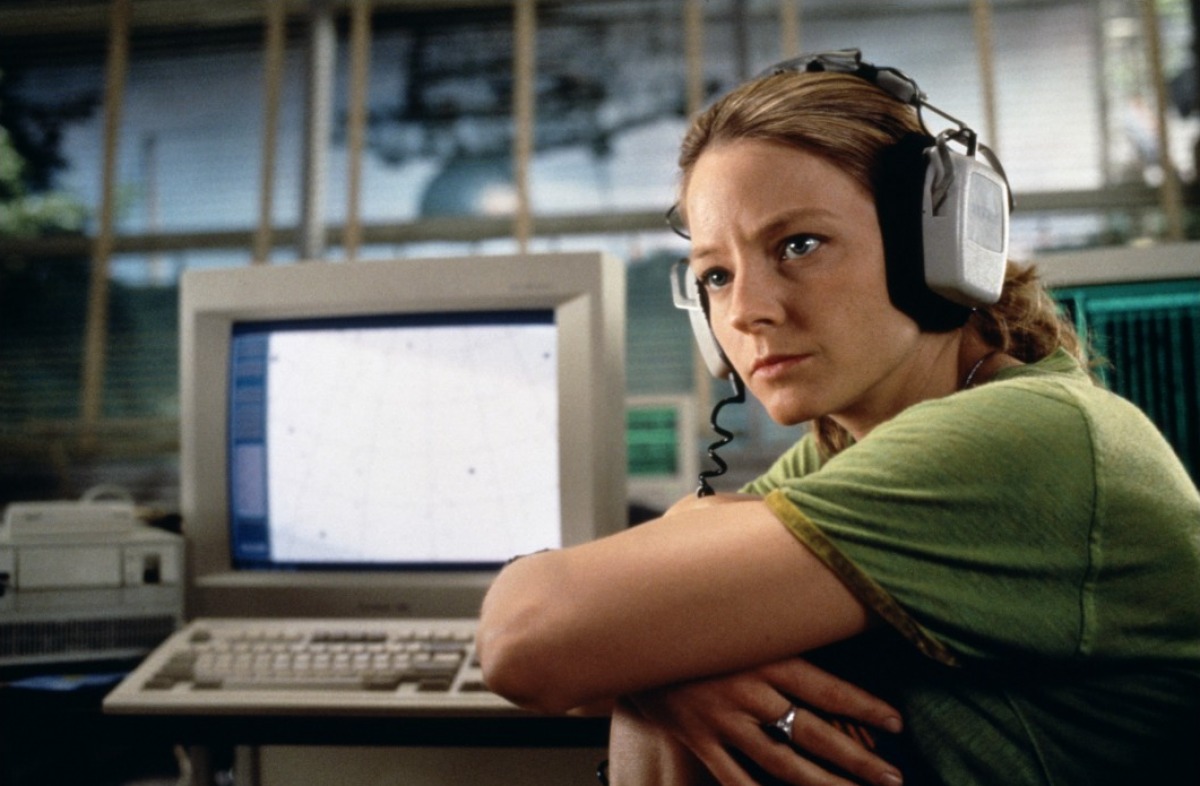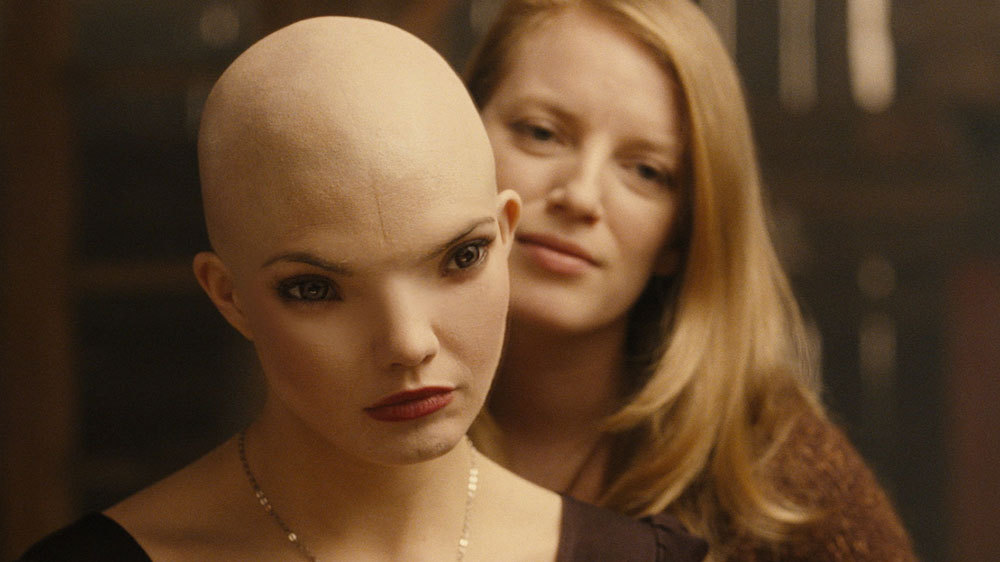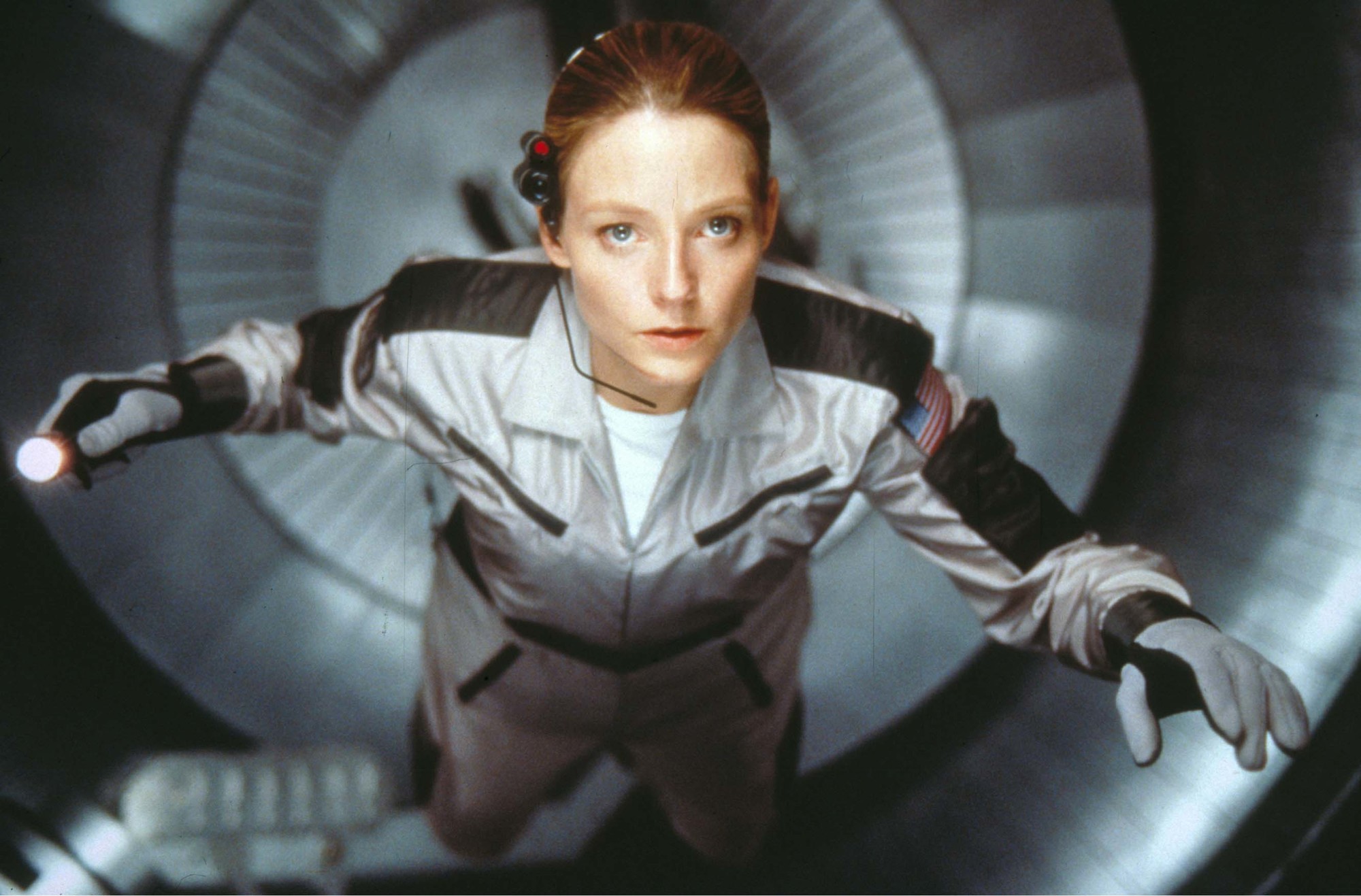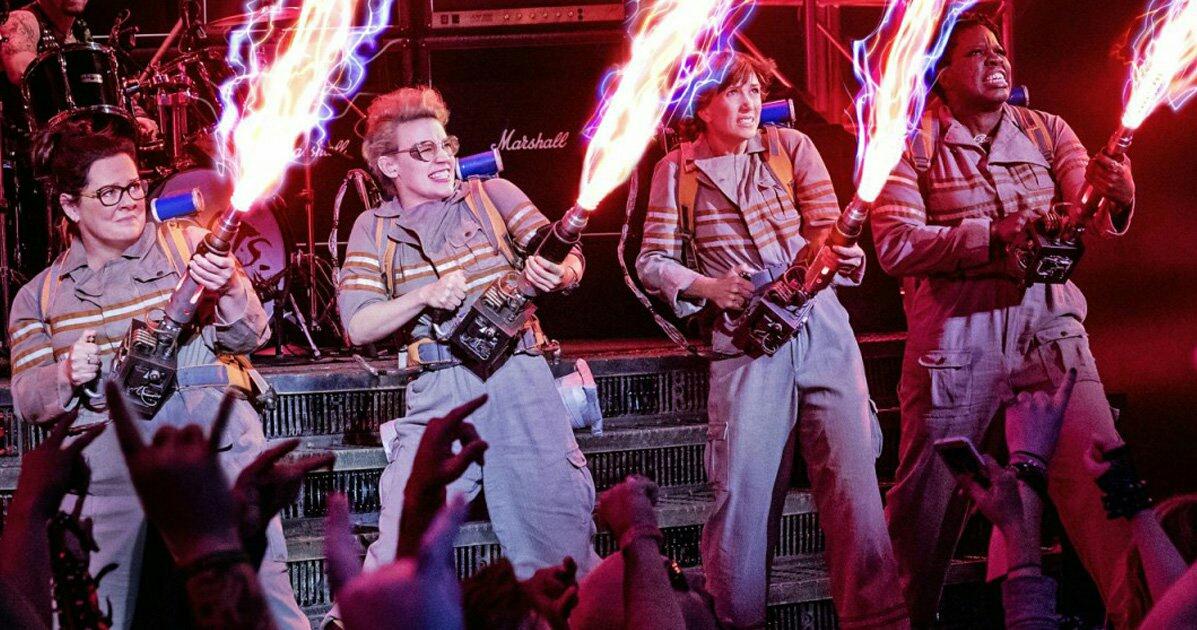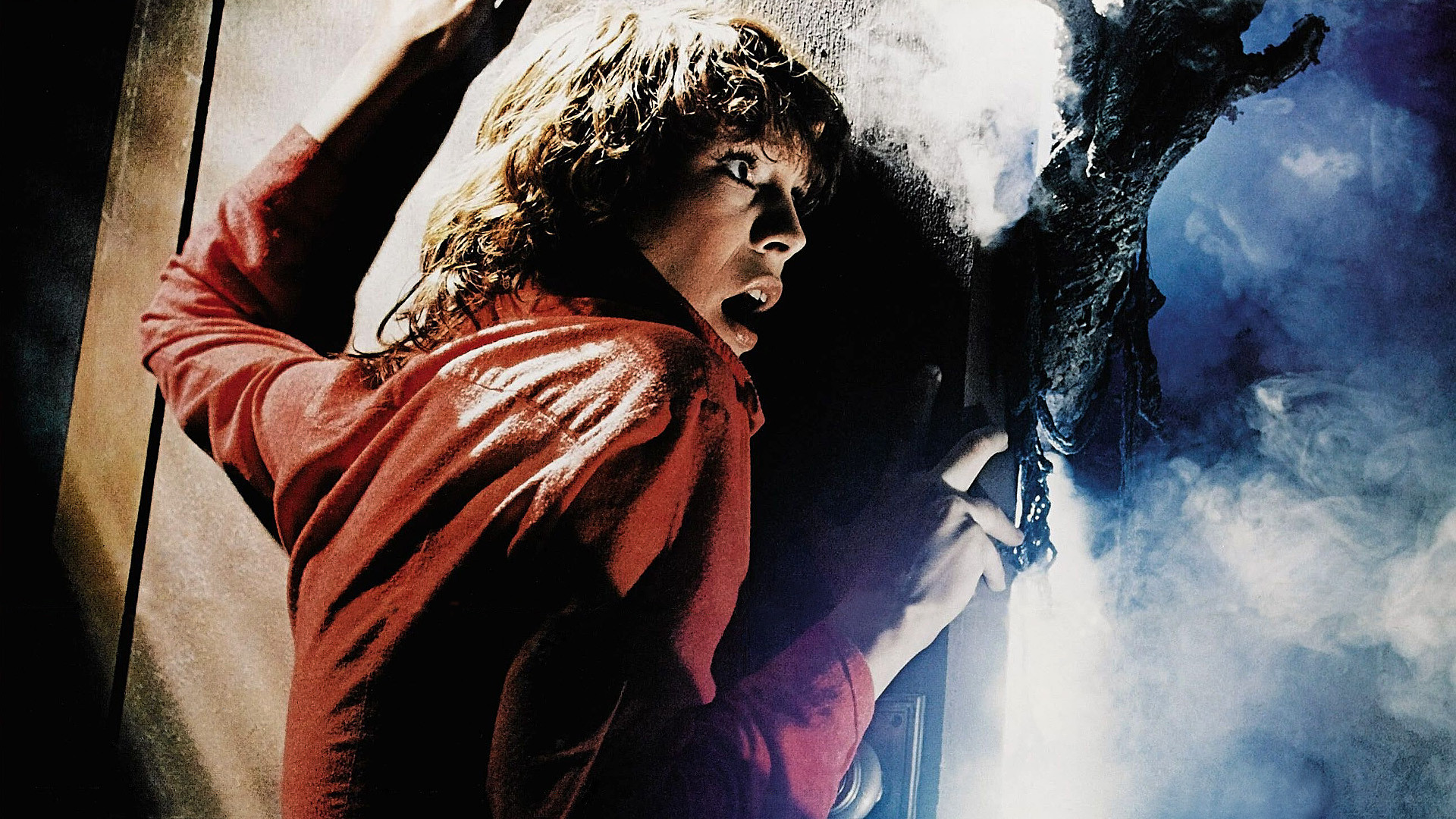
This guest post by ThoughtPusher appears as part of our theme week on Ladies of the 1980s. | Spoilers ahead.
When I saw the theme for this month, I assumed John Hughes and cult-favorites with coming-of-age individuality would be well-covered territory; so as I considered topics that might extend beyond teen angst and stellar soundtracks, I started thinking about friendship. Honing in on my beloved 80s-era references, I would like to say that I immediately jumped into an ocean of examples of empowering female friendships such as the spot-on interpretation of The Golden Girls that Megan Kearns published awhile ago. But instead, I thought of a horror movie that stood out to me as presenting more women than men — and three really different kinds of women — who come together to survive an onslaught of vengeful ghosts.
Before watching the movie with a more critical lens, I reminisced that these strong female characters drove the community response to crisis as they began to interact and even came to depend on each other. But now in retrospect, I see that they remain isolated from each other and do not develop any mutually fulfilling relationships like the sense of family in my nostalgic memory of The Golden Girls household. I originally thought this month’s theme would provide an opportunity to examine the genesis of female friendships through crisis. But upon further examination, these characters only come together in a geographic sense rather than develop significant strength through the social bonds of supporting each other. And with that, I welcome you back to the early scream-queen transition into the 80s in the John Carpenter classic The Fog (1980).
The film opens with John Houseman telling a campfire story about the intentional shipwreck of colony settlers with leprosy and their vengeful ghosts who return with the fog to search for the six people who conspired to destroy them and steal their gold. With the ghost story told, Carpenter progressively introduces three kinds of women — literally progressing from the first to the second to the third, cut back to one, to two, to three — for the first half of the movie until their storylines start to converge.
Stevie Wayne (Adrienne Barbeau) speaks from her lighthouse radio booth “on top of the world,” wishing the town of Antonio Bay a happy 100th anniversary, and questioning the foreboding weather forecast since she sees a great view of clear skies. It’s significant that this introduction to her character indicates her presence at all of the town locations in establishing shots during her broadcast, rather than any camera shots of her talking into the mic. A few fishermen drinking on a ship in the bay also question the reported fog bank as they discuss the voice on the radio, and one is surprised to find out that another once met her at a little league game. From the outset, one star of the film is more a presence in voice than body.

Stevie is the most basic female archetype: a Mother to young son Andy (Ty Mitchell) and later to the community. As a local radio broadcaster who at one point identifies herself as Antonio Bay’s “nightlight,” she is the steady voice that informs the town of what is happening and what they should do — quite like many of us hear that inherited parental voice in the back of our heads providing a stream of thoughts, advice, and occasional criticism. There are almost as many shots in the movie of different radios while Stevie’s broadcasting as there are of her embodied agency in the booth. There’s no father in the picture (well, not in the story, although we see a few pictures of a happy family presumably with a young Andy); so Andy’s babysitter, Mrs. Kobritz (Regina Waldon), fills in at home when Stevie is at work. As the Surrogate-Mother, she’s the physically present caretaker for Andy in the absence of his professional mom. In fact, both women ask Andy at different times about the other, so it doesn’t seem like the maternal mind and body interact except through the son.
Further, in an amazingly strange representation of motherhood, Stevie and Andy share one scene together that is not mediated by either the radio or phone when Andy wakes up his mom after finding a gold coin that turned into a plank of wood from the crashed ghost ship on the beach. They are in the same bedroom set, but the entire conversation is edited shot-reverse-shot conversational style so that they don’t share any eye lines. Even in the one clear two-shot, Stevie has yet to open her eyes as she rises from bed with Andy talking excitedly in the background. In this entire scene, they don’t even touch! Not a hug, not a pulling up of the jacket zipper, not even a tussle of Andy’s hair as the kid goes about his day searching the shoreline for washed-up treasure. In The Fog, Stevie becomes a completely isolated and disembodied Mother, especially since all of the other characters look at radios to an objectified Voice rather than an embodied woman.
During the night of glowing ghost-fueled fog, and after she learns it’s homicidal, Stevie watches it approach her house in the distance. On the air, she announces: “My son is trapped by the fog. Andy, get out of the house! Run!” She begs for someone to help as she watches the fog bank invade her dockside home. Shortly thereafter, the fog moves away and, without knowing if anyone heard her call, Stevie apologizes to her son in a disturbingly unmotherly way: “Andy, I don’t even know if you can hear me. I’m sorry that I didn’t come for you… that I wasn’t there.” She can’t leave her post since she has responsibilities to her job and the listening audience in town? I mean, what the fuck?! She’s standing in her booth asking her kid to understand because, stifling of tears (and sounding more like she’s either a ghost to him or standing on his grave), “I have to stay here.” Then Stevie swallows her fear or pain or what should be an emotional transition from a son’s Mother to a community’s Voice and she begins objectively reporting the movement of the fog through town. Street by street, she describes locations in a distanced public-broadcasting tone. She alerts her listeners to seek shelter and “stay away from the fog.” For those who can get out of town, she announces the changing clear path to get to the old church. Amazingly(ish), the surviving primary characters all gather there for a showdown with the fog-ghosts.
When Stevie apologizes to Andy, she says goodbye and sheds her working mother identity for a civic-minded character, where the good of the community takes precedence over familial obligations. This is certainly character development, but I can’t shake the abruptness of this sudden shift from family to community protection — it’s not like she’s a cop or other public official. Yet her transmission becomes the stationary lighthouse perspective as it blares through the fog and alerts the community about the dangerous environmental threat and how to reach safety. Strangely, according to the setting of the lighthouse, Stevie does not have a superior perspective of the town, but much more a lateral cliff-side view; so there is no implied omniscience but only relational distance from the danger observed through the night with limited ability to know if her message is being heard by anyone, including the son who may or may not have been slaughtered. By the end of the film, Stevie transitions from Mother to a fully disembodied Voice. But more to come on that shipwreck of character…

Elsewhere in the universe of strong women illuminated by the supernatural fog, Elizabeth Solley (Jamie Lee Curtis) hitches a ride with Nick Castle (Tom Atkins) even though he says he’s on his way to “the other side of town.” Sure she probably could have walked that distance in an hour, but why not jump into his truck, directly ask if he’s weird, and then roll to his house after sharing a scare when the truck windows mysteriously smash in. Elizabeth and Nick have sex, so she is neither the archetypal Whore required by The Cabin in the Woods standards nor hindered by the “sex equals death” rule of Scream. Elizabeth enters the film as a drifter, hitchhiking her way to Vancouver when Nick drives by in his pick-up. She then stays attached to Nick (quite literally for much of their screen time outside of the truck) during the ensuing events — so I’m going with the double-meaning characterization of Hitcher for her.
In the scenes leading up to the nighttime crisis, Carpenter posits a physical relation between the Hitcher and Andy which appeals to an initial shared innocence. As Nick tells Elizabeth the scary story of his father’s supernatural encounter at sea, she pulls her legs in to hold them in a self-comforting embrace. Andy maintains a similar posture as he fearfully sits on his bed while the invading ghosts start to break into his room.
At a point of character development beyond an innocent drifter, Elizabeth is in the truck with Nick when Stevie yells out commands to her son to leave and run away from the fog. As Stevie pleads for help from listeners, Elizabeth and Nick heed the panicked Mother-Voice and rescue Andy. Where Stevie drops out of the Mother role (and the Surrogate has already been murdered in ghostly revenge), the Hitcher picks up the maternal responsibility. In various scary moments after the rescue, Elizabeth breaks away from her distressed damsel reactions of screaming and reaching for Nick. Instead, she holds Andy to her body in a protective frontal embrace to shield him physically in a way that the Mother and the grandmotherly Surrogate did not — they both told him to run for cover and the Hitcher actually provides him cover.
Elizabeth ventures into the uncharted waters of Motherhood by grasping a child; she’s now Hitched to a son rather than a lover. And for all we know, she might even become Andy’s Mother; because by the end of the movie, Stevie broadcasts a “keep watching the skies” kind of warning to all those in town and at sea, before she does any damn thing to try to find out if her own son lived through the night! There’s no mention of “I hope to see you again” or “meet me at the dock,” much less giving the impression that her recently ghost-hook-stabbed shoulder might hurt. This is the shipwreck of the Mother: Stevie moves on from the (possible) loss of her son and becomes the fully disembodied Mother-Voice for the community.
Thus Carpenter distinguishes different kinds of Mother characters that remain severed, even if their narratives overlap: a Mother loses touch with her son and his Surrogate as she becomes the town’s Mother-Voice who tries to explain the best route to survival to listeners, including a drifter who falls into bed with a man and stays attached to him through danger until she becomes a Mother/Surrogate to an abandoned child. Sure, the Hitcher becomes the savior of the Mother-Voice’s son; but she answers the on-air pleas unbeknownst to the Mother herself. There is no interaction between them. The woman who begins in the maternal role acts for the community so she is unable to save her own child from danger while a stranger passing through town can. The woman who fills the carefree Hitcher role is embroiled in the strange happenings of the cursed town and answers the call to save a child in need. However, Elizabeth takes on that burden without any mutual involvement with Stevie, and both women extend their characters beyond their initial tropes without even a chance meeting or conversation.

Finally, the last of The Fog‘s three lead women characters, the ever-talented Janet Leigh portrays civic leader Kathy Williams. She’s in the stressful waning hours of planning the town’s centennial celebration and statue dedication. She has an aide, Sandy (Nancy Loomis), whom she depends on, talks to, and thus provides Bechdel checkmarks next to all three boxes. But with that criteria fulfilled, Sandy plays the role of Assistant to Mrs. Williams, so even the personal discussions between them seem like the kinds of conversations that are the norm between close coworkers rather than friends. Yet Mrs. Williams consistently maintains a community-focus. Before leaving a meeting with the Priest (Hal Holbrook) who is troubled by the recent revelation of the town’s foundation on the demise of the ghastly (and now ghostly) lepers, Mrs. Williams wants to ensure he’s okay and offers to send for the doctor. Sandy indicates the time and implies their need to get on with their agenda, but Mrs. Williams is the epitome of the Civic Leader: she really cares about others, despite Sandy pointing at her watch to stress the importance of wasting time during a busy day.
Further establishing herself as Civic Leader, the power goes out and the crowd’s candles are already lit for the dedication ceremony, so Mrs. Williams calmly announces over the now-dead microphone: “We should all proceed over to the statue.” The patrons move through in a calm and orderly fashion, and Mrs. Williams wants everyone to be able to participate and then leave the ceremony safely. Unlike Stevie’s panicked-Mother freak-out session directing Andy to get out of the house, Mrs. Williams focuses on civic responsibilities distinct from her personal upheaval. Carpenter makes use of a really effective long take to focus on Mrs. Williams’ emotional processing of a personal crisis in the midst of her civic responsibilities, but she lives this moment isolated in a crowded frame. After the Sheriff leaves the shot, Sandy tries to comfort her; but Mrs. Williams only brings her eyes to Sandy’s hand on her arm. When she finally meets Sandy’s eye line, she has shifted the topic from personal loss to an obligation to keep it together for the ceremony. She dabs her eyes and reestablishes her firm, professional tone: “We can’t have the chairlady of the birthday celebration in tears, can we?”
As the two community-centric women leave the shot, the camera backtracks through the narrow bar with Nick to reveal that Elizabeth has been there the entire time. Sure, she’s not a member of this community and may not know Mrs. Williams’ role or identity beyond this emotional outburst, but she doesn’t say or do anything? Really?? Granted, Jamie Lee Curtis is in character at the time, and demonstrates her chops alongside the set watching her mom (Janet Leigh) cry — take after take for the dozen or so attempts to get this long tracking shot right — and not reacting like a daughter in the vicinity of her own mom’s gut-wrenching performance. But wouldn’t someone who eventually heeds a distress call to rescue a child in danger also be someone who would find a way to try to comfort someone going through a personal crisis?
This one long tracking shot seems to finally rest on a two-shot of Nick sidling up to the bar next to Elizabeth, but then there’s a broadcasting radio on the back shelf of the bar. Stevie’s updates grab Nick’s attention, and he goes to the payphone to make contact with the Voice. This is the first scene where we get a sense that the three primary women in the movie are actually in the same movie, and it is when none of them share a shot or directly speak to either of the others.

Stevie’s awareness is established as one of independent authority, and her relationship to the other female characters are sequentially constructed in the editing room. Once the stage is set, Carpenter cuts through the gradually overlapping events of these women in an orderly fashion. Eventually, we reach the climactic crisis: Surrogate murdered, the Hitcher and Civic Leader along with the Assistant come together in obedience to the supreme Voice of the Mother (along with a motherless son wandering around with a local guy who happens to be able to engage directly with all the women) in the church to hold off the invading ghosts while the local Priest tries to break the curse his grandfather helped catalyze. But come on, what the fuck is going on here? Even in the barricaded confines of the church with leper-ghost arms swiping into the windows, Elizabeth and Mrs. Williams do not speak to each other or even seem to acknowledge the other’s existence. They are in survival mode against invading ghosts of a cursed past! By no means do I need (or frankly even want) a gushy-emotional “wind beneath my wings” kind of friendship to be imposed on these strangers who met about an hour ago in narrative time, but not even a damn glance of mutual recognition? And when they leave the church as a successful kick-ass team of survivors, all the embodied primaries stand gazing at the dissipating fog as if they’ve become distinct statues memorializing fierce independence.
Would it end the whole narrative world if we got to see these women battle vengeful ghosts in close quarters and leave the arena with a celebratory fist-bump, or a relieved hug, or even a little wink or smirk in a shared eye line?! Much less if they could walk away from the destruction as they catch up on what’s been going on aside from the apocalypse. (So, yeah, maybe the Buffy-Willow friendship is more to my taste; but seriously…) These are all strong women; all survivors of a shared catastrophe, all indirectly related protectors, yet all isolated identities who remain without equal, friendless.
It seems like The Fog exposes the idea that strong women can’t have any meaningful relationships that might endure and even help them survive and understand themselves better through tough times. The whole foundation for mutual recognition in friendship (at least in a classic Aristotelian sense) would be to have a reflection in peers to better understand themselves as individuals. Instead, we’re presented with dynamic women cut off from those who should have the most impact on their lives, and they apparently know it. For instance, Stevie talks to the weatherman who calls to report movement of the fog bank rolling against the wind, and they seem to have a cordial professional relationship until we see how easily she deflects his advances. He asks her to dinner, but with a humorous revelation she lets him down: “My idea of perfection is a voice on the phone.” Maybe this only expresses Stevie’s independence from a conventional relationship, but her movement toward disembodied-Voice isolation is already established in her sole on-screen encounter with her son. When he wakes her the morning of the ghost ship plank washing ashore, she says to him in a rather put-off tired voice: “I love you… but sometimes you’re a real pain.” This attitude (along with not sharing an eye line with her son in that whole mess) distances Stevie from the physical relational expectations of a Mother.

A similar kind of distance is established by Mrs. Williams with her Assistant. Sandy supports Mrs. Williams throughout the hectic day and into the crisis, but even this relationship stays fairly hierarchical as a professional arrangement. We can assume that a Civic Leader would have an Assistant in planning and executing community activities, but Mrs. Williams expresses a playful exasperation with Sandy, calling her “a little annoying” but right about leaving the public ceremony to deal with personal loss — as if those two ways of existing must remain distinct. As the supernatural events unfold, even though Elizabeth stays attached to Nick, she keeps reiterating her intention of leaving town to get to Vancouver. Each of these women thus have relational attachments in their lives, but no sign of friendship that matters beyond practical concerns. What the fuck does that tell us about ladies of the 80s? Women can be strong as individual types and even experience dynamic growth, but they don’t interact as equals.
Nerd Alert: In a social satire published in the previous century’s 80s, fog was referenced as something that could illuminate identity and dictate proper social relations. In Edwin A. Abbott’s classic novella, Flatland, the upper-class Art of Sight Recognition is enhanced by Fog, an environmental condition which augments a finer quality of depth perception in two-dimensional reality. Fog becomes a superior blessing in the landscape of Flatland because it entails the possibility of seeing acceptable interpretations of social status that remain hidden from clear perception. Just as visual perception in Flatland is enhanced by Fog, Carpenter distinguishes these female identities in their encounters with the glowing fog and its ghostly apparitions. But the undeveloped idea latent in Abbott’s world — whether or not the inferences based on Fog-enhanced perception are appropriate to determine the value of an encountered subject within the preconceived social hierarchy — becomes an issue of social interpretation of ladies of the 1980s.
Even if we get a sense of strong women capable of being independent, protecting children, or maintaining civic-mindedness; these are distinct personal identities which each impose their own proper social relations (or absence thereof). We do not witness any overlap within individuals or immediacy of female friendship. This is even more surprising considering the screenplay was co-written by Debra Hill. Each female trope becomes a species in itself, incomparable to other kinds of women and apparently cut off from previous character identities, such as Stevie shedding the Mother role for community-Voice role and not forging a more complex union of the two. The Fog illuminates the boundaries of different types of women. To strong women out there on an individual level: Sure you can be a good mother, a free spirit, or a community leader; but those things don’t really all go together. And to strong women out there on a social level: Sure you can be individuals and even wear different hats when it comes to character development, but you and other kinds of women are just ships blindly passing through a foggy bay with access only to indirect communication — mediated by technology, hierarchical relations, or some local guy like Nick.
Through The Fog, we see the emergence of these starring women — town-defending, child-protecting, ghost-fighting women — who all develop beyond their initial molds. Yet they don’t seem to have any potential to build relationships or mutual respect for each other across those boundaries. Carpenter edits a vision of three distinct kinds of women of the early 80s — roles which can be broadened for potential character development, but remain distinct enough to offer only indirect support from other women. I can only imagine how much these different women would benefit from meaningful interactions with each other through this crisis. But I’m left merely to speculate on the respect and support that friendship could provide to each of these completely different personalities… like imagining a sudden onslaught of vengeful ghosts invading The Golden Girls’ household. Oooh, I think I just got a totally wicked crossover sequel idea!
In retrospect, what The Fog reveals is a glimpse of some really strong ladies of the 80s; but it falls short of giving us any clear view of what strong women can be, do, and become together.
ThoughtPusher might live somewhere near you (especially if you have a neighbor who blasts New Order or Tears for Fears records most nights), but certainly is a cinephile who has no interest in being followed or asking to be liked, unless it’s for access to an embarrassingly extensive VHS collection.
